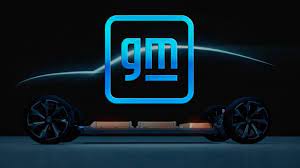
Breaking News
6.8 SPC vs. 300 Blackout: Powering Up the AR Platform
 Autism Study By McCullough Foundation Begins New Era of Free Scientific Inquiry
Autism Study By McCullough Foundation Begins New Era of Free Scientific Inquiry
 REVOLUTION DAY 8: Libertarians JOIN The Revolution
REVOLUTION DAY 8: Libertarians JOIN The Revolution
 US Government and Westinghouse $80bn Nuclear Reactor Deal
US Government and Westinghouse $80bn Nuclear Reactor Deal
Top Tech News
 Graphene Dream Becomes a Reality as Miracle Material Enters Production for Better Chips, Batteries
Graphene Dream Becomes a Reality as Miracle Material Enters Production for Better Chips, Batteries
 Virtual Fencing May Allow Thousands More Cattle to Be Ranched on Land Rather Than in Barns
Virtual Fencing May Allow Thousands More Cattle to Be Ranched on Land Rather Than in Barns
 Prominent Personalities Sign Letter Seeking Ban On 'Development Of Superintelligence'
Prominent Personalities Sign Letter Seeking Ban On 'Development Of Superintelligence'
 Why 'Mirror Life' Is Causing Some Genetic Scientists To Freak Out
Why 'Mirror Life' Is Causing Some Genetic Scientists To Freak Out
 Retina e-paper promises screens 'visually indistinguishable from reality'
Retina e-paper promises screens 'visually indistinguishable from reality'
 Scientists baffled as interstellar visitor appears to reverse thrust before vanishing behind the sun
Scientists baffled as interstellar visitor appears to reverse thrust before vanishing behind the sun
 Future of Satellite of Direct to Cellphone
Future of Satellite of Direct to Cellphone
 Amazon goes nuclear with new modular reactor plant
Amazon goes nuclear with new modular reactor plant
 China Is Making 800-Mile EV Batteries. Here's Why America Can't Have Them
China Is Making 800-Mile EV Batteries. Here's Why America Can't Have Them
The Race Is On: GM Makes Multimillion Dollar Investment In U.S. Lithium Project

We have been extensively documenting the amount of natural resources that are going to be necessary to make the world-wide shift to EVs that it looks like the globe is on the cusp on. Considering the amount of raw materials necessary, and the way that they are mined, is paramount in trying to visualize the carbon footprint of EVs that use many rare earth minerals in their batteries.
And so, as the industry shifts more toward EV, so comes new infrastructure - and that's exactly what General Motors is planning, according to a new report from Reuters. The major U.S. automaker is now investing in a U.S. lithium project that could become the largest in the country by 2024.
It makes GM one of the first automakers to develop its own source of lithium. The company said last week it will be making a "multimillion-dollar investment" and will help develop Controlled Thermal Resources (CTR) Ltd's Hell's Kitchen geothermal brine project near California's Salton Sea.

 China Innovates: Transforming Sand into Paper
China Innovates: Transforming Sand into Paper

